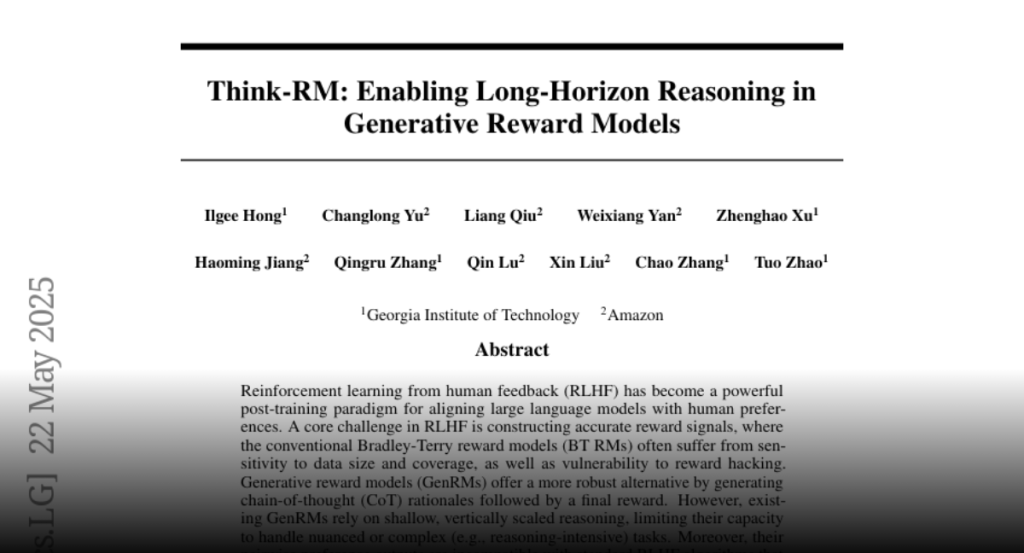Think-RM is a framework that enhances generative reward models with long-horizon reasoning and a novel pairwise RLHF pipeline to improve end-policy performance in aligning large language models with human preferences.
Reinforcement learning from human feedback (RLHF) has become a powerful
post-training paradigm for aligning large language models with human
preferences. A core challenge in RLHF is constructing accurate reward signals,
where the conventional Bradley-Terry reward models (BT RMs) often suffer from
sensitivity to data size and coverage, as well as vulnerability to reward
hacking. Generative reward models (GenRMs) offer a more robust alternative by
generating chain-of-thought (CoT) rationales followed by a final reward.
However, existing GenRMs rely on shallow, vertically scaled reasoning, limiting
their capacity to handle nuanced or complex (e.g., reasoning-intensive) tasks.
Moreover, their pairwise preference outputs are incompatible with standard RLHF
algorithms that require pointwise reward signals. In this work, we introduce
Think-RM, a training framework that enables long-horizon reasoning in GenRMs by
modeling an internal thinking process. Rather than producing structured,
externally provided rationales, Think-RM generates flexible, self-guided
reasoning traces that support advanced capabilities such as self-reflection,
hypothetical reasoning, and divergent reasoning. To elicit these reasoning
abilities, we first warm-up the models by supervised fine-tuning (SFT) over
long CoT data. We then further improve the model’s long-horizon abilities by
rule-based reinforcement learning (RL). In addition, we propose a novel
pairwise RLHF pipeline that directly optimizes policies using pairwise
preference rewards, eliminating the need for pointwise reward conversion and
enabling more effective use of Think-RM outputs. Experiments show that Think-RM
achieves state-of-the-art results on RM-Bench, outperforming both BT RM and
vertically scaled GenRM by 8%. When combined with our pairwise RLHF pipeline,
it demonstrates superior end-policy performance compared to traditional
approaches.

